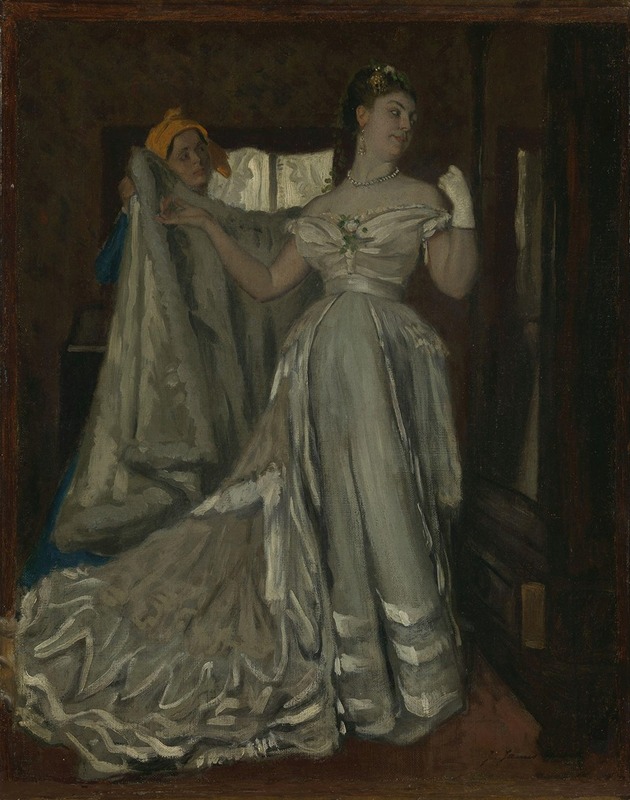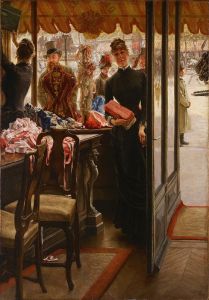
Lady and Chambermaid
A hand-painted replica of James Tissot’s masterpiece Lady and Chambermaid, meticulously crafted by professional artists to capture the true essence of the original. Each piece is created with museum-quality canvas and rare mineral pigments, carefully painted by experienced artists with delicate brushstrokes and rich, layered colors to perfectly recreate the texture of the original artwork. Unlike machine-printed reproductions, this hand-painted version brings the painting to life, infused with the artist’s emotions and skill in every stroke. Whether for personal collection or home decoration, it instantly elevates the artistic atmosphere of any space.
James Tissot's painting "Lady and Chambermaid" is a notable work by the French painter, who was renowned for his detailed and vivid depictions of contemporary life in the late 19th century. Tissot, born Jacques Joseph Tissot in 1836 in Nantes, France, was a prominent artist during the Victorian era, known for his genre paintings that often captured the nuances of social life and fashion.
"Lady and Chambermaid" is an exemplary piece that reflects Tissot's keen interest in the social dynamics and domestic settings of his time. The painting portrays a scene involving a lady and her chambermaid, a common subject in Tissot's oeuvre, which often explored the interactions between different social classes. The work is characterized by Tissot's meticulous attention to detail, particularly in the depiction of clothing and interior settings, which provides insight into the fashion and domestic environments of the period.
Tissot's style is marked by his use of rich colors and precise brushwork, which are evident in "Lady and Chambermaid." The painting captures the elegance and sophistication of the lady's attire, as well as the more modest dress of the chambermaid, highlighting the contrast between their social standings. This contrast is a recurring theme in Tissot's work, where he often juxtaposed the lives of the wealthy with those of their servants, offering a commentary on the social hierarchies of the time.
The setting of the painting is typically a well-appointed interior, reflecting the opulence and taste of the upper classes during the late 19th century. Tissot's ability to render such environments with accuracy and flair is one of the reasons his work remains popular and studied today. His paintings serve as a visual record of the period's social customs and material culture.
Tissot's career was marked by his move to London in 1871, where he became a successful society painter. His works from this period, including "Lady and Chambermaid," often reflect the influence of British society and fashion. Tissot's paintings were well-received by the public and critics alike, and he became known for his ability to capture the essence of his subjects with both sensitivity and precision.
"Lady and Chambermaid" is part of Tissot's broader body of work that includes other notable paintings such as "The Ball on Shipboard" and "The Gallery of H.M.S. 'Calcutta' (Portsmouth)." These works collectively showcase Tissot's fascination with the social mores and lifestyles of the Victorian era, making him a significant figure in the art world of his time.
Overall, James Tissot's "Lady and Chambermaid" is a testament to his skill as a painter and his insightful observations of the society in which he lived. The painting continues to be appreciated for its artistic merit and its ability to convey the complexities of social interaction during the late 19th century.


















